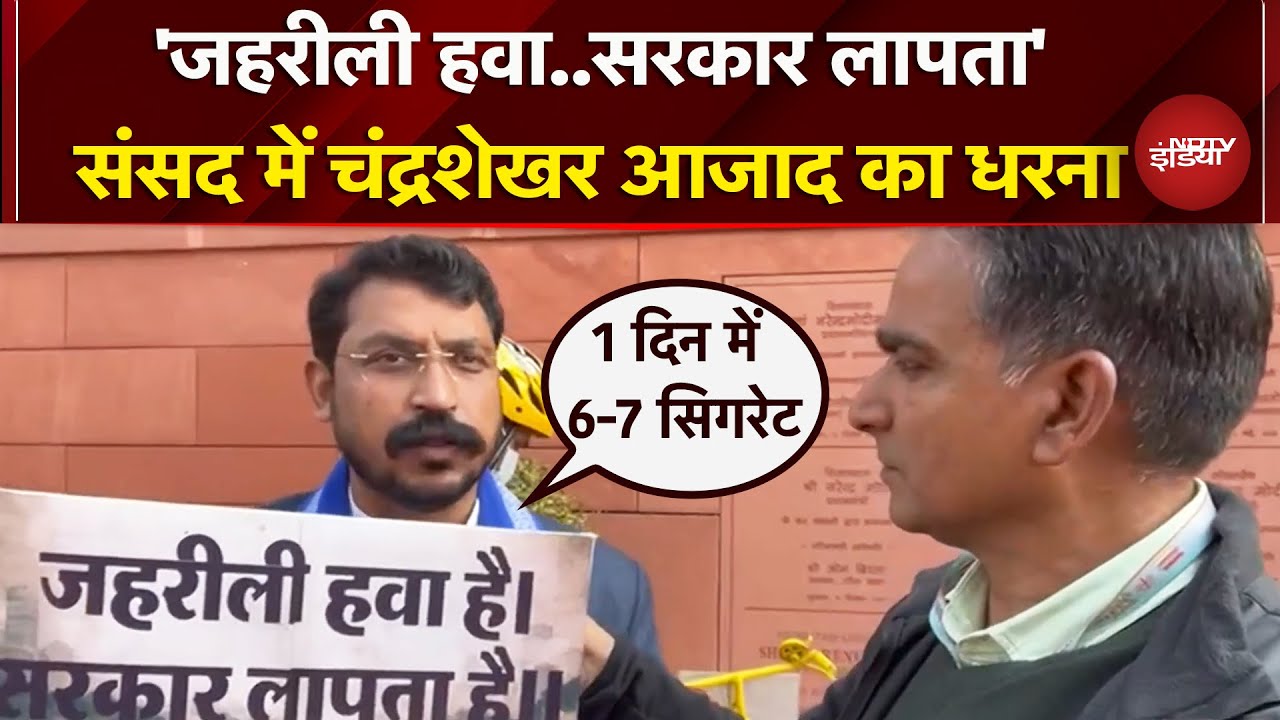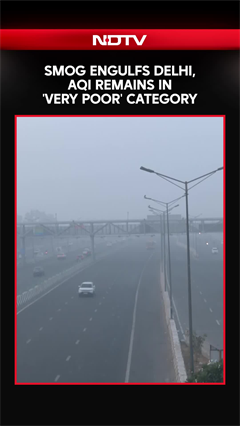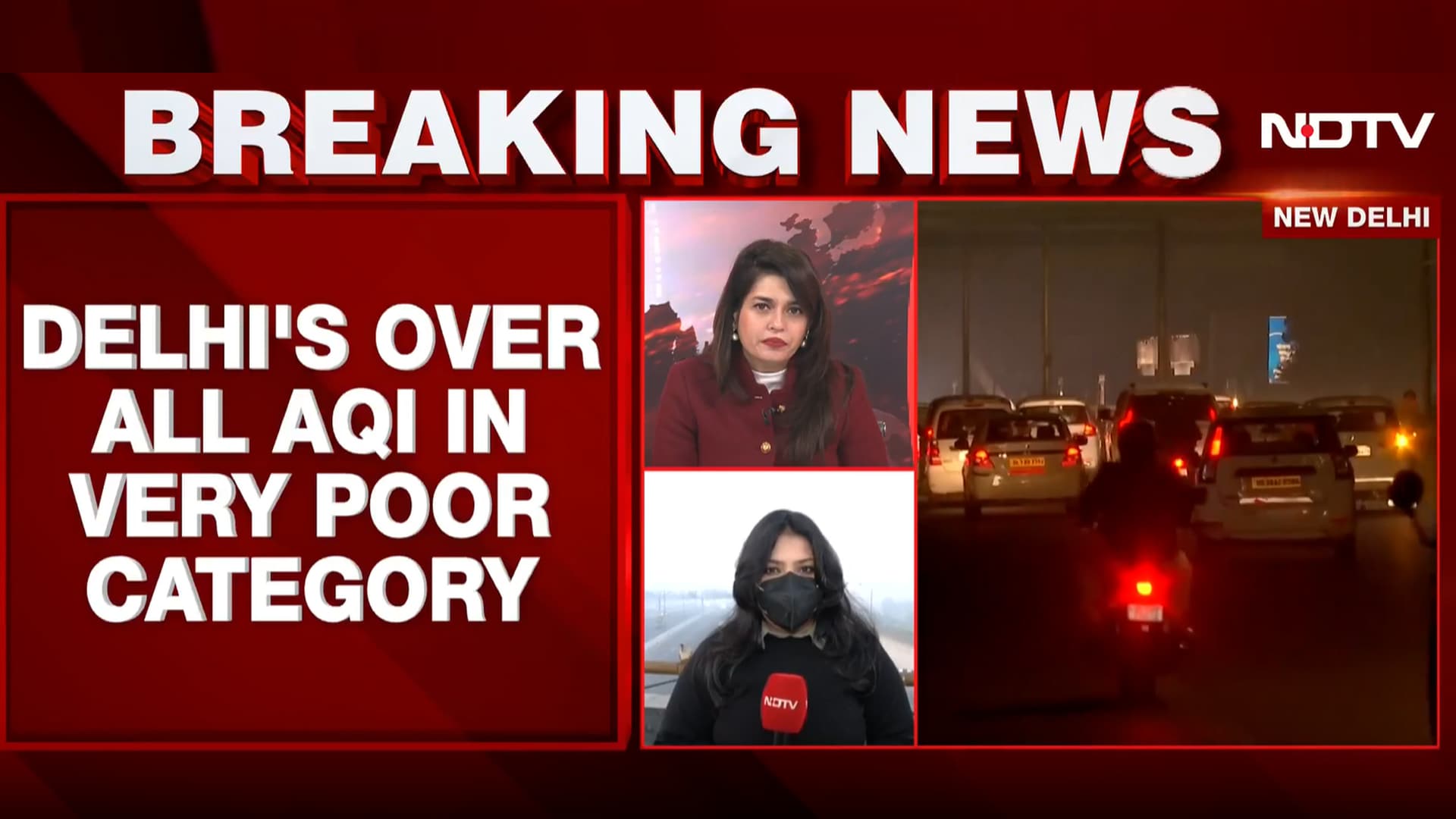- Home/
- Smog Towers To Improve Air Quality: How Delhi Is Fighting Pollution
Smog Towers To Improve Air Quality: How Delhi Is Fighting Pollution

Every winter for at least a decade now, Delhi has been bracing for extreme air pollution that harms the health of its population, particularly children and the elderly.
When temperatures drop and wind speed declines, toxic particles from car tailpipes, industrial chimneys, and construction sites remain trapped over Delhi and its satellite cities. This is also the season when farmers in neighbouring states harvest summer crops and burn the residue, leaving Delhi in a thick white haze that lasts for days.
This year, once again, the city's authorities are rolling out emergency measures such as reducing road traffic, banning farm fires, and activating the city's smog towers to improve air quality. Along with that is the revival of a debate about the effectiveness of the towers.
What are smog towers?
Delhi residents often keep air purifiers - small fans connected to a high-efficiency particulate air filter, or HEPA - at home. The fan pushes the air through a filter that traps dust, particulate matter, pollen, and other pollutants. A smog tower follows similar principles and is intended to be a giant air purifier installed in the open.
The tower, equipped with thousands of filters and can be as high as twenty meters (66 feet), is designed to capture pollution particles and improve air quality in densely populated areas. Although the technology they rely on is simple, smog towers need a lot of maintenance. They are also costly to set up - the one serving the city's iconic business center, Connaught Place, set up in 2021, cost about $2.5 million.
How did India come up with the idea?
Inspired by a smog tower set up in the city of Xi An in China, the Supreme Court asked the federal government several years ago to install similar equipment in Delhi to control air pollution, with funds from private companies and technical support from researchers at the Indian Institute of Technology Bombay.
There are at least two main units in Delhi, which are switched on when air quality worsens. When a small smog tower was tested in 2020 in a busy market to filter 600,000 cubic meters of air per day, the Delhi-based think tank Council on Energy, Environment and Water worked out that the city would need to deploy 2.5 million such filters to clean its air. The operation would cost the equivalent of over $20 billion, about 2.5 times the Delhi state budget for the year.
Do smog towers help in improving air quality?
As they operate outdoors, smog towers cannot clean enough air or fast enough to make a difference. As soon as filtered air is released, it mixes again with the surrounding pollution, which offsets any improvements.
A team of researchers at IIT Bombay recently examined the tower operating in Connaught Place and found it cleans air with 50% efficiency that drops to 30% at a distance of 50 meters from the filters, and just above 10% when 500 meters away. The researchers also discovered that the structure holding filters in place was not tightly sealed, allowing polluted air to bypass them.
While the idea still enjoys support from local authorities in Delhi and beyond, the overwhelming scientific consensus is that smog towers are costly and ineffective.
Latest Stories
- Reported by Ishika Verma | Wednesday December 17, 2025 , New Delhi
As the Delhi government prepares to tighten pollution control measures, petrol pump dealers in Delhi have issued a strong caution over the proposed "No PUC, No Fuel" rule.
- Reported by Shreya Ghosh | Wednesday December 17, 2025
A long-awaited discussion on air pollution is likely to take place during the Parliament's Winter Session proceedings on Thursday.
- Wednesday December 17, 2025 , Dehradun
As a thick winter smog once again engulfs Delhi, forcing schools to shut intermittently and residents indoors, thousands of people are heading for the hills in search of cleaner air.
- Written by Toshita Sahni , Edited by Neha Grover | Wednesday December 17, 2025
A viral video showing a traffic jam near a popular tourist spot in Himachal Pradesh has sparked a discussion about people fleeing air pollution in North India.
- Written by NDTV Auto Desk | Wednesday December 17, 2025
The Delhi government has banned the entry of non-BS-VI vehicles registered outside of the national capital.
................................ Advertisement ................................
Latest Videos
Opinion
Blog | Well Done, Delhi. You've Turned Lung Sacrifice Into A Badge Of HonourSaikat Kumar Bose
Monday November 10, 2025Till some years back, Delhiites would ask angry questions to those in power about the capitals annual tryst with toxic air. This has changed. Those in the driving seat dont see the need to answer now.
Opinion | Why Indians Have Just Given Up On Air Pollution CrisisTanushree Ganguly
Friday December 20, 2024While some may argue that people in Delhi are now more aware of air pollution than they were a decade back, my rebuttal would be that awareness does not mean that people are concerned.
Opinion | You Must Outrage Over Filthy Air More Than Once A YearJyoti Pande Lavakare
Tuesday December 10, 2024Delhi welcomed us with monsoon rains and mangos. We were home. Fast forward a couple of years, in the winter of 2012, I found myself in denial about something other parents, mostly expats, were calling toxic air.
Opinion | Delhi's Air Pollution Situation Is Like A Bad MarriageNishtha Gautam
Friday November 22, 2024On a good day, such as today, the AQI reading in Delhi is 407. We are jubilant at the sickly sunshine trickling through the slightly dissipated smog. At least its not 1600.
दिवाली... पराली... सियासी जुगाली!Ashwini kumar
Monday November 18, 2024दिल्ली-एनसीआर में प्रदूषण का समाधान तो आज तक मिला नहीं. हर साल चिंतित होकर हम-आप सांसों की तकलीफ के साथ-साथ दिल और ब्लड प्रेशर के मरीज भी क्यों बनें?


















